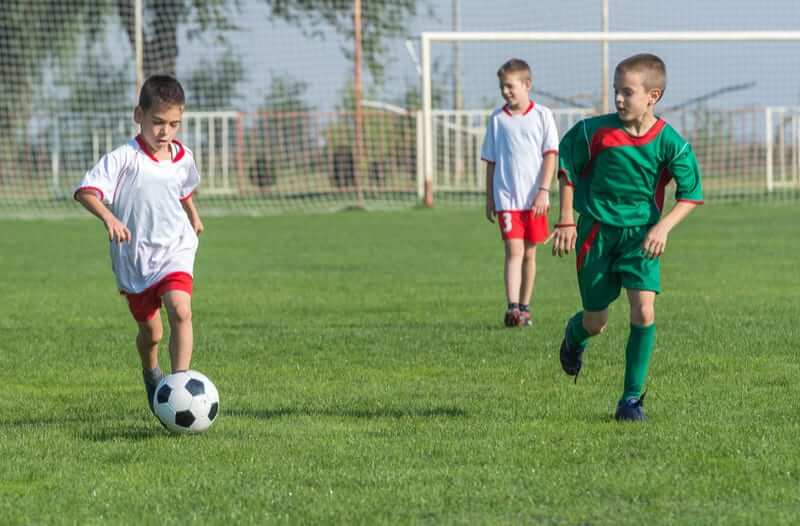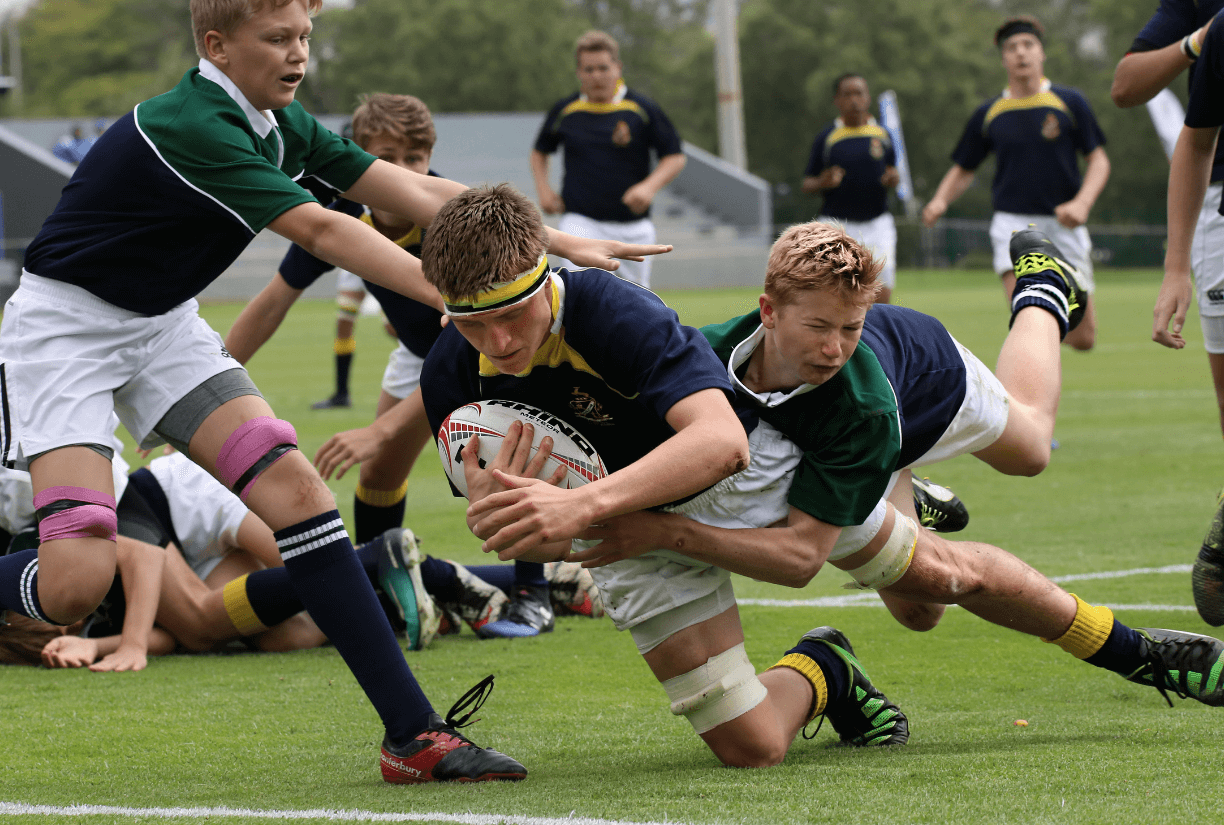Children have never had it so good. Well, maybe. With children having more and more options of how to spend their leisure time than ever before, their engagement with sports must now compete with a variety of influences and distractions. Some activities, like the increased availability of travel are very positive, though some that challenge the status quo, like social media or online gaming, have brought with it both positives and negatives. However, they all eat into time and effort that often used to be devoted to watching or playing sports.
Technology has had a significant impact on the level of physical activity children do on a daily basis. Research conducted by Ofcom in 2016 highlighted that the average five to 15-year-old spent a staggering 15 hours a week browsing the internet, and this screen time was separate to the 13 hours and 36 minutes spent watching a TV1. With over 28 hours of time in front of a computer or television, this influence has significantly shifted the engagement and participation in general physical activity.
Interestingly, this doesn’t just boil down to the frequency in which pupils engage in sports and other physical activities. The rise of video gaming, and internet applications such as Twitch (a live streaming video platform) have also influenced how much sport is being consumed by young people. According to statistics, video gamers aged between 18 and 25 now spend more time watching other people play games than they do traditional sports. In fact, the group of people studied (who are based in France, Germany, Japan, South Korea, the UK and the US) spend almost an hour more of their time watching streamers play games on Twitch each week than they do sports.
However, other factors affect the motivation and willingness in sports outside of these technological influences. These issues include physical and mental wellness, as well as the overall attitude to the benefits that sports play in long-term health.
It can be challenging to overcome the above factors and motivate children to participate in sports. In this blog, we will guide you through strategies to engage students in physical education and boost their interest in reaping the rewards of exercise for both the body and mind. Sometimes it can be as simple as directing them to cool sports kit from high street stores.
The health benefits of getting children interested in sport
Fundamentally, like any discipline, sport teaches students a host of life and educational skills. On the outset, physical fitness is improved. However, mental capabilities are also utilised in both training and competitive environments. In terms of how exercise impacts educational performance, several links have been found between sport and increased academic achievement. To support this link, a study carried out by the universities of Strathclyde and Dundee concluded that physical exercise benefitted performance in the classroom. The lead researcher, Dr Josie Booth, also stated: “There are other benefits and that is something that should be especially important to parents, policy-makers and people involved in education.”2
Looking a little further into the other benefits as described by Dr Josie Booth, there are a host of elements that make up the reasons why exercise helps pupils get better grades.
The most notable aspects include:
- Exercise regulates blood sugar – Children are prone to dips and troughs in sugar levels due to the food and drink they consume, and this can cause fatigue. By exercising frequently, blood sugar levels are stabilised, reducing the low mood or energy that can affect willingness to partake in sports.
- Exercise promotes good sleep – Children need quality sleep, and with the higher levels of screen time in everyday lifestyles, this can affect sleeping patterns. By encouraging parents to switch off screens earlier, your pupils will reap the rewards of improved motivation and energy.
- Exercise controls weight – As pupils get older, weight and perceived body image can affect their self-esteem. When children play sports and exercise, this assists weight control and helps them to feel confident in both school and social environments, and they can achieve more from their studies.
Reasons why kids love sports
Sport and fitness play a significant role in lifestyles for some families, and children may have influential external factors, such as family role models or athletes, that they aspire to be.
British athletes have made substantial efforts to promote the benefits of sports. The legacy of the 2012 Olympics and events such as European Championships in Glasgow showcase the passion and determination of young competitors in a variety of disciplines.
There are also a range of other reasons why children love playing sports aside from winning.
- Sport is fun – Fun is often the initial decider for kids when choosing to participate in any activity. If they don’t find it fun in those initial sessions, it will be challenging to keep them engaged and on task.
- It improves peoples’ skills – Sports give children the opportunity to develop skills and learn new things in a supportive environment. This boosts their confidence and performance levels in both education and extra-curricular activities.
- You stay fit and healthy – Alongside understanding the benefits of physical exercise, many schools also promote healthy choices within both the school and the home environment. Associations such as the British Nutrition Foundation3 are offering free food and nutrition training to primary school teachers in a bid to tackle childhood obesity and support physical education.
Travis from FitStop Fitness advises that “children are naturally competitive and love to outdo themselves – it’s a part of growing up! Just like they love to see themselves grow taller, kids love to watch themselves move faster and take more steps in the day. Because of that, fitness trackers are absolutely amazing at encouraging children to participate in sport. Being able to see their performance and watch its improvement over time is extremely excited for a lot of kids, sporty or not. Fitness trackers are also almost game-like in the way they function, so kids are drawn to the wearable technology and love to feel like “an adult” with their fancy fitness trackers on! I highly recommend using fitness trackers to encourage children to participate in sports and be more involved in their progress. Don’t forget to be part of the experience with the child and give them lots of praise if they improve, and let them know that it’s not the end of the world if they don’t. In the end, the performance itself isn’t as important as the fact that the kids are getting out there, participating, and doing their best.”
To add to the above, Aroosha Nekonam a Personal Trainer at Ultimate Performance says “nobody needs to be tracking absolutely everything under the sun as this may become unhealthy. Importantly, fitness trackers must be used correctly and wisely. To get children into sport and enjoying progression, it best to actually start tracking sleep duration and quality, step count and water intake, all things that will simply make them healthier all round. Trackers are not always that accurate and so it is important to not take them absolutely seriously as those using them can get disappointed and/or set unrealistic goals based on previous performance. It is important to always emphasise the bigger picture of enjoying sport, taking apart and being healthy.”
Identifying disengaged students
In some cases, engaging a pupil is substantially more challenging than those that love sports and general PE lessons. As an example, you may have a pupil that has no interest in engaging with or participating in sporting activities, versus one that plays a number of sports in their free time. The challenge here for PE teachers is to show the first pupil the value of physical activity and help them to make time for it in their routine. This is all while maintaining the enthusiasm of the second pupil and helping them to push themselves further in their fitness.
These pupils may have many reasons why they don’t want to take part. Some of the most common areas to identify include:
- Lack of confidence – As classes are made of up of a variety of personalities and characters, some students feel intimated or lack confidence in front of their peers.
- Inactive role models – Family and friends are amongst the most influential role models for children, and if a culture of inactivity surrounds them, this can affect how they view physical exercise and its benefits.
- Bullying – Some children experience bullying during school or sporting activities, which causes them to shy away from participation. A campaign launched by The MCC and the Chance to Shine charity spoke with children about their experiences and highlighted incidences of bad sportsmanship across different age groups4.
Unmotivated and disengaged students can cause disruption if the above areas are not considered and accounted for during lessons.
As a PE teacher, what can you do to get kids interested in sports?
As discussed above, there are many challenges and pressures for PE teachers to provide a motivating and beneficial environment for all students. This is particularly difficult when every child has unique attributes that have to be incorporated into lesson plans.

One of the first areas to consider before planning is to start with ‘why’. Similar to the concept of the same name by Simon Sinek, this focuses on looking at why you do what you do. In Simon’s words: “You have to know WHY you do WHAT you do. If people don’t buy WHAT you do, they buy WHY you do it, so it follows that if you don’t know WHY you do WHAT you do, how will anyone else?”5
How this relates to teaching, simply put, is that kids won’t buy into the idea or lesson if you don’t fully understand and communicate why you’re delivering it. Thus, the purpose and conviction of lessons are paramount to offering inclusive sports and activities.
Additionally, you should:
- Create lesson plans that are inclusive – In educational environments, there are different abilities and motivation levels to assess. It is important to determine these and tweak lessons to cater to all capabilities. Lessons should engage every single student no matter their skillset, so adapt your ideas to support development for each pupil. Jennifer O’Hagan, Lead Educator at Leor In Home Early Learning, advises: “Incorporate a variety of different sports within their school curriculum to appeal to individual interests. Children may like to participate in team games such as soccer or netball. Whilst others prefer a more individualised sporting activity such tennis or badminton. • It is also important to allow children the opportunity to explore all different sports and not restrict them due to their age, physical appearance or gender.”
- Make lessons fun – PE lessons should be fun, engaging and straightforward. Kids can find complicated games and activities overwhelming and demotivating, which can lead to poor interaction and unwillingness to participate. There are several ways to make PE fun including seasonal themed activities, in-house competitions and simple skills-based games to boost coordination and confidence for other activities. You can also differentiate activities, so every student feels comfortable taking part in every session.
- Encourage healthy competition – John Tauer, Men’s Head Basketball Coach at the University of St Thomas, Minnesota says: “Competition can be healthy when it provides feedback to kids about their performance and improvement, when winning is not the sole or primary objective, and when kids get to learn about themselves under challenging situations.”6. In-house competitions and games can subtly subject the student to small levels of competition to see how they react before more competitive sports.
- Use influential role models to support engagement – athletes and sporting stars, such as Andy Murray and Jessica Ennis-Hill can have a significant influence on young people. This can span further than getting children into sport, also showcasing the struggles and adversity it took to get to the top. These positive role models can help engage pupils from all walks of life including those that love sport and those that shy away. There are several initiatives across the country that give children the chance to meet sports stars and Olympians such as Team Super Schools and the Youth Sport Trust.
- Incorporate sporting events into lessons – According to statistics published by Sport England after the London 2012 Olympic Games, the UK’s success in the event has helped contribute to a record number of people playing sport. Use sporting events, such as the Olympics, the Rugby World Cup and the UEFA Champions League to increase engagement in sports and PE lessons during specific times of the year.
- Organise sports tours – Children love trying something a little different outside the confines of school, so arranging a sports tour, could be the perfect option. These activities bring different levels of ability together in teams to create an environment where pupils support each other to succeed. By mixing multi-level ability, students are required to form partnerships and learn from each other. The saying ‘you are only as strong as your weakest link’ is prevalent in these instances, and encouraging collaboration ensures pupils understand the value that each team member plays.
- Arrange different extra-curricular activities – It’s vital to remember that variety is key to keeping people engaged. Organising trips for your pupils to take part in a range of different physical activities such as rock climbing, ice skating and martial arts can also be a great way to increase their interest and motivation in getting up and moving.
- Organise fundraisers. It does good for a charity or sports based iniative and it bodes well for the children to get involved from a community side of things. Whether it is formed from school classes or local sports clubs, this is good for their personal growth too.
Anwar Khalil from My Recruitment Plus, adds that having friends and peers also interested in sports will encourage children to get involved themselves. He says: “As a dad of a 14-year-old, it’s “the friends”. If they’re doing it with friends, it means they will have fun and there will be competition. Without either of these, there’s no longevity or success, so kids will quit and if they don’t quit, they will remain mediocre.”
Sources:
23 https://www.bbc.co.uk/news/uk-scotland-24608813
3 https://www.nutrition.org.uk/
4 https://www.bbc.co.uk/newsround/17728711
5 https://medium.com/leadership-motivation-and-impact/the-power-of-starting-with-why-f8e491392ef8
6 https://www.ineos.com/inch-magazine/articles/issue-5/debate/
7 https://www.abcfundraising.com/fundraising-ideas/school-fundraisers







